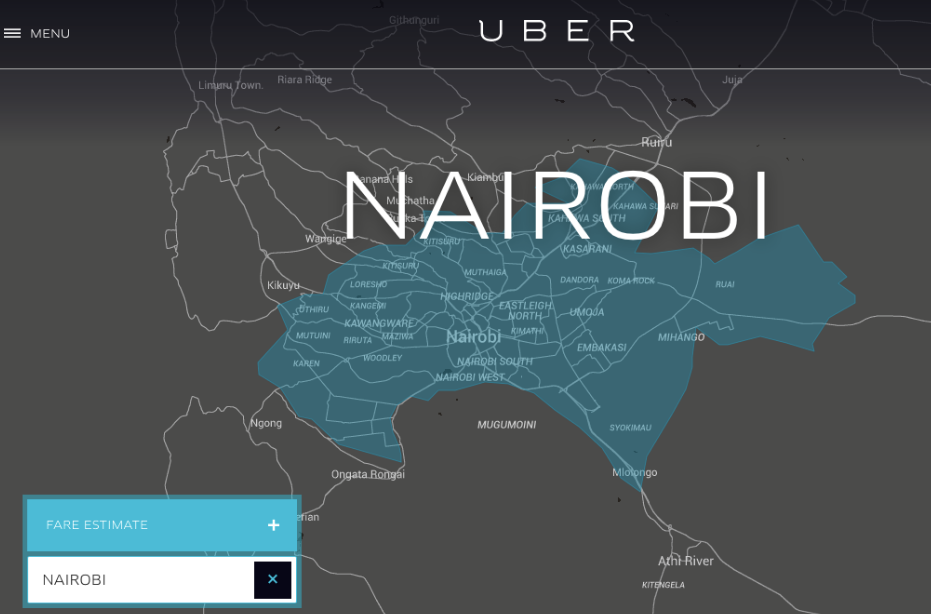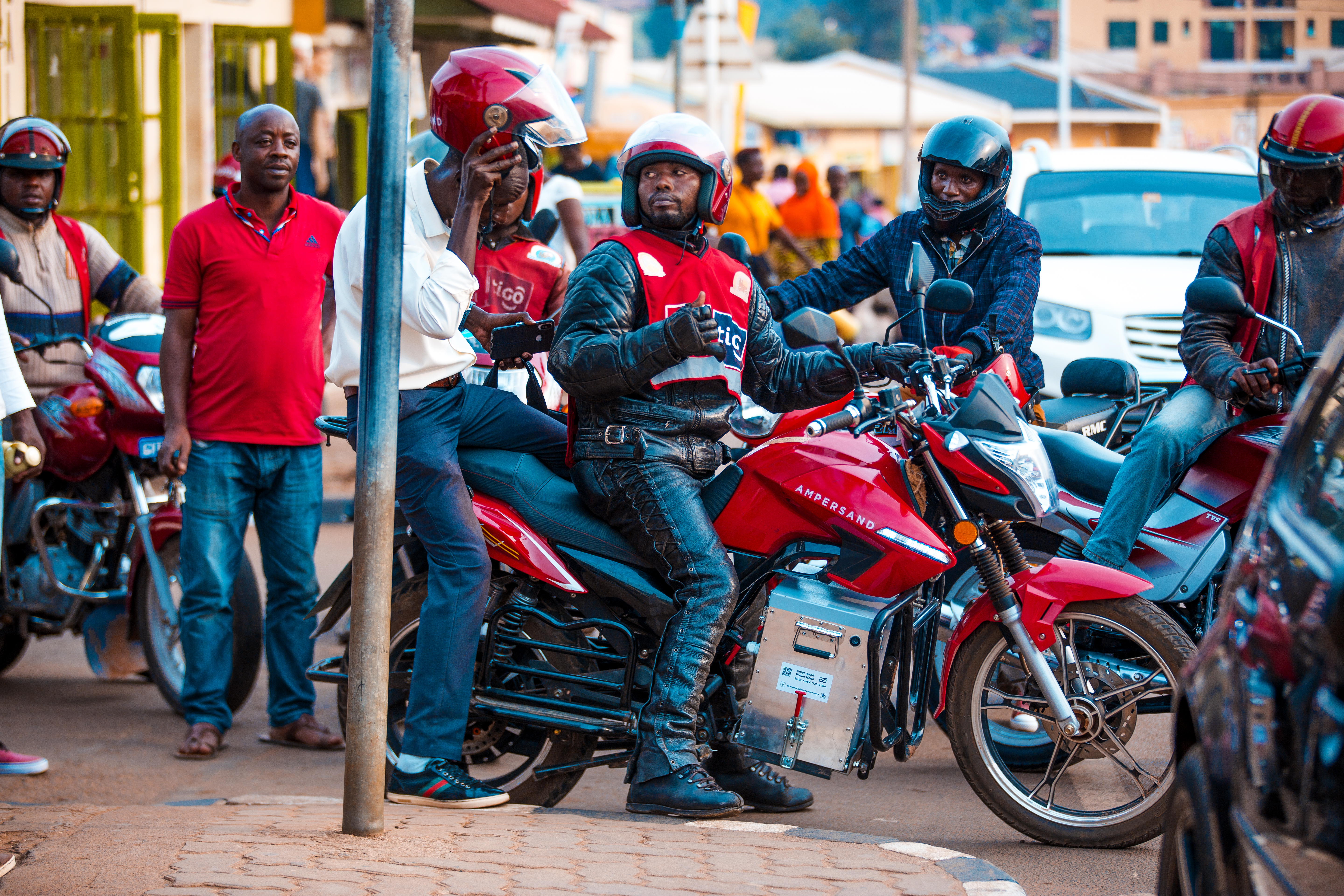Uber is launching its Uber Cash digital wallet feature in Sub-Saharan Africa through a partnership with San Francisco based — Nigerian founded — fintech firm Flutterwave.
The arrangement will allow riders to top up Uber wallets using the dozens of remittance partners active on Flutterwave’s Pan-African network.
Flutterwave operates as a B2B payments gateway network that allows clients to tap its APIs and customize payments applications.
Uber Cash will go live this week and next for Uber’s ride-hail operations in South Africa, Kenya, Nigeria, Uganda and Ghana, Ivory Coast and Tanzania, according to Alon Lits — Uber’s General Manager for Sub-Saharan Africa.
“Depending on the country, you’ve got different top up methods available. For example in Nigeria you can use your Verve Card or mobile money. In Kenya, you can use M-Pesa and EFT and in South Africa you can top up with EFT,” said Lits.
Uber Cash in Africa will also accept transfers from Flutterwave’s Barter payment app, launched with Visa in 2019.
The move could increase Uber’s ride traffic in Africa by boosting the volume of funds sent to digital wallets and reducing friction in the payment process.
Uber still accepts cash on the continent — which has one of the world’s largest unbanked populations — but has made strides on financial inclusion through mobile money.
Update on Uber Africa
Uber has been in Africa since 2015 and continued to adapt to local market dynamics, including global and local competition and more recently, COVID-19. The company’s GM Alon Lits spoke to TechCrunch on updates — including EV possibilities — and weathering the coronavirus outbreak in Africa.
Uber in Sub-Saharan Africa continued to run through the pandemic, with a couple exceptions. “The only places we ceased operations was where there were government directives,” Lits said. That included Uganda and Lagos, Nigeria.
Though he couldn’t share data, Lits acknowledged there had been a significant reduction in Uber’s Africa business through the pandemic, in line with the 70% drop in global ride volume Uber CEO Dara Khosrowshahi disclosed in March.
“You can imagine in markets where we were not allowed to operate revenues obviously go to zero,” said Lits.
Like Africa’s broader tech ecosystem, Uber has adapted its business to the outbreak of COVID-19 in Africa, which hit hardest in March and April and led to lockdowns in key economies, such as Nigeria, Kenya and South Africa
On how to make people feel safe about ride-hailing in a coronavirus world, Lits highlighted some specific practices. In line with Uber’s global policy, it’s mandatory in Africa for riders and drivers to wear masks.
“We’re actually leveraging facial recognition technology to check that drivers are wearing masks before they go,” said Lits. Uber Africa is also experimenting with impact safe, plastic dividers for its cars in Kenya and Nigeria.

Image Credits: Uber
In Africa, Uber has continued to expand its services and experiment with things the company doesn’t do in in any major markets. The first was allowing cash payments in 2016 — something Uber hopes the introduction of Uber Cash will help reduce.
Along with rival Bolt, Uber connected ride-hail products to Africa’s motorcycle and three-wheeled tuk-tuk taxi markets in 2018.
Uber moved into delivery in Africa, with Uber Eats, and recently started transporting medical supplies in South Africa through a partnership with The Bill and Melinda Gates Foundation.
Mobility Africa
In addition to global competitors, such as Bolt, Uber faces local competition as Africa’s mobility sector becomes a hotspot for VC and startups.
A couple trends worth tracking will be Uber’s potential expansion to Ethiopia and moves toward EV development in Africa.
On Ethiopia, the country has a nascent tech scene with the strongest demographic and economic thesis — Africa’s second largest population and seventh biggest economy — to become the continent’s next digital hotspot.
Ethiopia also has a burgeoning ride-hail industry, with local mobility ventures Ride and Zayride. Uber hasn’t mentioned (that we know of) any intent to move into the East African country. But if it does, that would serve as a strong indicator of the company’s commitment to remaining a mobility player in Africa.

Ampersand in Rwanda, Image Credits: Ampersand
With regards to electric, there’s been movement on the continent over the last year toward developing EVs for ride-hail and delivery use.
In 2019, Nigerian mobility startup MAX.ng raised a $7 million Series A round backed by Yamaha, a portion of which was dedicated to pilot e-motorcycles powered by renewable energy.
Last year the government of Rwanda established a national plan to phase out gas motorcycle taxis for e-motos, working in partnership with EV startup Ampersand.
And in May, Vaya Africa — a ride-hail mobility venture founded by mogul Strive Masiyiwa — launched an electric taxi service and solar charging network in Zimbabwe. Vaya plans to expand the program across the continent and is exploring e-moto passenger and delivery products.
On Uber’s moves toward electric in Africa, it could begin with two or three wheeled transit.
“That’s something we’ve been looking at in South Africa…nothing that we’ve launched yet, but it is a conversation that’s ongoing,” said Uber’s Sub-Saharan Africa GM Alon Lits.
He noted one of the challenges of such an electric model on the continent is lack of a robust charging infrastructure.
Even so, if Uber enters that space — with Vaya and others — emissions free ride-hail and delivery EVs buzzing around African cities could soon be a reality.

